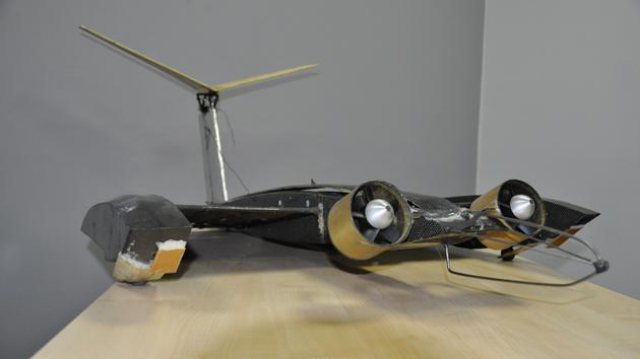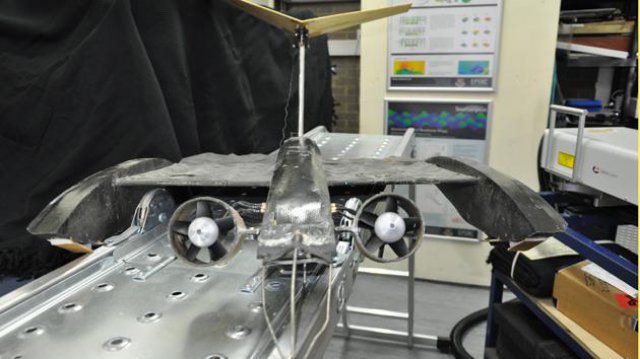Scientists at Southampton and Imperial have completely reframed the design problem of drones by looking to the flight capabilities of bats
This last year has seen the launch of the first passenger drone controlled by a tablet, a prototype of a drone-controlled robot garbage collector, and online retailer Amazon exploring the use of a hybrid drone for delivering packages to customers. One research company estimated that consumer purchases of drones will rise from 4 million in 2015 to 16 million by 2020 driven by decreasing price and the increased functionality of newer drones. However according to Professor Bharathram Ganapathisubramani, Head of Aerodynamics and Flight Mechanics Group at Southampton University such conventional drones are good, ‘but their efficiency level is really poor, the battery life is a problem.’
Professor Ganapathisubramani and his team at Southampton are working with a team from Imperial College, London on a more efficient drone inspired by the aerodynamics of bat wings. The team at Imperial College are working on the computational models for the design and the Southampton team are doing the lab-based work and building the drone. This new machine should be able to fly longer distances than current drones.
Historically Micro-Air Vehicles (MAVs) have been designed and modelled as miniaturised passenger aircraft or imitating helicopters. ‘The helicopter-based ones are all these quadcopters, hexacopters, octocopters,’ says Professor Ganapathisubramani referring to the number of rotors, ‘that’s what you normally see as a drone. They have these multiple rotary wings on top which enable them to lift off, spin and fly. The bio-inspiration aspect there is very minimal as they are essentially taking a helicopter and scaling it down.’
WINGS AND ARTIFICIAL MUSCLES
The starting point for this project completely reframes the design problem. About five or six years ago Professor Ganapathisubramani and Professor Rafael Palacios, his lead collaborator from Imperial College, went to a talk on the flight of bats and the aerodynamics of bat wings, ‘the fact the wings are flexible gives it a better aerodynamic performance,’ he explains. ‘Then doing some research into this we discovered these things called artificial muscles. When you apply a certain voltage across them they kind of relax and become more flexible.’
These artificial muscles would normally be used in robotics where if tendons need to be made, electroactive polymers are used as artificial muscles. But they’re used mostly on mechanical systems not aerodynamic systems. The lack of mechanical parts would also make the MAV easier to maintain. In the MAV an electric voltage will be applied across the wings that either stiffen or relax the wings.
‘Our idea was that if you make something flexible you get a good performance,’ says Professor Ganapathisubramani. ‘What we are proposing is not going to work for commercial aircraft. It will have to be contained to small-sized vehicles because the kind of loads experienced are just the right level for the flexibility to have a positive effect.’
SAILS OF A SHIP
They have replaced what would normally be a composite material wing with latex wings, and the shape of these wings, depending on the speed of the plane and the elasticity of the rubber membrane, respond to the environment. Professor Ganapathisubramani makes an analogy with the sails of a ship. ‘It’s why they use a cloth sail because they wouldn’t know which direction the wind would come from,’ he says, ‘so they used a cloth and once the wind blows the sail will balloon up in the direction of the wind and give you the propulsion. We are kind of using the same concept but for Micro-Air Vehicles.’ In this way, the latex wings also respond to the environment which makes them more efficient.
But using the information from the numerical modelling provided by Imperial College, they can design the active wings so the drone isn’t relying on the wind only, it’s proactive, rather than just adapting to the environment reactively. ‘Suppose we have to make a left turn or a right turn, you can actually relax the material properties on a wing and make manoeuvres rather than just relying on gusts or the environment to change the wing shape,’ he explains. The modelling means they know what kinds of voltage will be needed to change wing shape and direction with a certain force of wind. This functionality of the wing explains why an excited media doing stories on the project have compared it to Batman’s memory cloak.
Some of this technology has been incorporated in a 0.5m-wide vehicle tested in the laboratory and on the water. The next step explains Professor Ganapathisubramani would be to take the electro-active material they have studied extensively in lab settings and make it part of the vehicle and use the active part of this in manoeuvres. ‘The practical applications are that anywhere you see these scaled down versions of aircraft, these planes will be more efficient at doing those jobs,’ he says. ‘It is a different way of thinking about designing these vehicles.’
Photos: University of Southampton
Source: British Council


